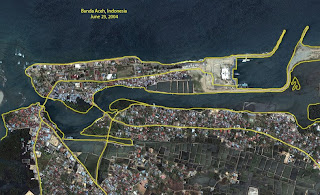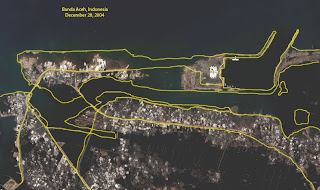Sara's Geography Blog
Monday, November 16, 2009
Wednesday, May 6, 2009
FINAL PROJECT
This is my final project. The task was to map the known prehistoric monuments in Scotland. Not easy for many reasons:
- the monuments are known by many names, many in Gaelic so looking up information on them in daunting and takes forever
- very few of them are well documented, most sources just list speculations and measurments
- The British don't seem to be in a hurry to excavate these, after all, they've been standing there for thousands of year
- prehistoric = no written history so speculations are all there is
Mapping these monuments was not horribly difficult. I spent (too) much time on the visual side of the map and did not pay attention to what I was doing. So I had to go back and change the buttons after making them bright red the first time, now they look much better (thanks for the suggestion Professor Hallden!!). In the end I had some extra time so I added some labels for the oceans etc. Overall I'm happy the way this turned out and would like to research more into these monuments.
Wednesday, April 15, 2009
Boxing Day Tsunami (Lab 10)
This lab shows the devastation of the tsunami produced by a big earthquake in December, 2004. Almost a quarter of a million people were killed.. One of these satellite images were taken in June 23, 2004 and the other, following the tsunami, in December 28, 2004. The lab itself was interesting, Photoshop is a great tool.


Thursday, April 9, 2009
Cartogram
Lab 9
Here is my Lab #9. Why on earth is Sandy Creek parking lot located in Boulder, Colorado? :-D I really have no idea how it ended up there and there didn't seem to be a way to move it around either.
This was a fun lab, the drawing part was easy and I can see how it could get really challenging if you were to draw something in more detail.
This was a fun lab, the drawing part was easy and I can see how it could get really challenging if you were to draw something in more detail.
Wednesday, April 1, 2009
Monday, March 30, 2009
Presentation: Hillshading and Draping
Hillshading and draping are tools that take a map to a whole new level. Hillshading makes the map look three dimensional and can be useful when identifying certain objects, such as river valleys and lowland areas, on a map. Draping means literally draping an image, such as a satellite image, over a terrain. Here are some examples of both tools.
This is a nice example of hillshading of the San Francisco Bay Area. If you look at a regular map of the same area, you might wonder why the bigger population centers are located in certain places. But when you see this map, you can tell how the topographic setting of the area affects where towns are located at. If you zoom close enough, you can tell that major roads are located in either valleys or on relatively flat ground.
This example map of Mile Creek Natural Area in Ithaca, New York shows a hillshaded map from an interesting angle. Digital raster graphics are combined with hillshading based on DEM. It is nice to see the effect of the contour lines, how the cartographer didn't get rid of them but chose to keep them in the map.
Here is a nice black and white map of the Easter Island from the Australian National University. This shows how effective hillshading can be even without the use of color.
This is a geological map draped over a topographic map. Combining geological data with the elevation makes sense since you can distinguish the different geological "categories" (sorry, I have no background in geology) and where they are located in the topographical setting.
A satellite image, such as Landsat image in this map can be draped over a digital elevation model. The nice thing about this map is that the way it is displayed, it looks more three dimensional than draping the same image over a "flat" map.
My last example is perhaps the most dramatic one of what draping can do. This is another Landsat image draped over a topographic map (from NASA's Shuttle Radar Topography Mission). It displays a part of Southern California. This map is perhaps the most life-like and illustrates the difference between elevations.
Subscribe to:
Posts (Atom)





